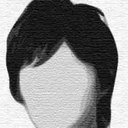Vertebral rounding deformity in pediatric spondylolisthesis occurs due to deficient of endochondral ossification of the growth plate: radiological, histological and immunohistochemical analysis of a rat spondylolisthesis model.
الكلمات الدالة
نبذة مختصرة
METHODS
A study using rat spondylolisthesis models.
OBJECTIVE
To clarify pathomechanism of vertebral rounding deformity in pediatric spondylolisthesis.
BACKGROUND
For high-grade slippage, rounding of sacrum surface associated with L5 spondylolisthesis is reported to be the most responsible risk factor. However, the exact pathomechanism of the rounding deformity is yet to be clarified.
METHODS
Spondylolisthesis rat model (4-week-old) was used. Radiographs were taken weekly for 5 weeks after the surgery. The lumbar spines were harvested for histology. Hematoxylin and eosin, alcian blue staining, and tartrate-resistant acid phosphatase staining were used. Immunohistochemically, the growth plate cartilage was studied for type II and X collagen. A modified bone histomorphometric analysis was also performed.
RESULTS
Radiographs showed slippage 1 week after surgery. Rounding deformity was obvious 2 weeks after surgery. The rounding deformity progressed with time. Three weeks after surgery, the specific columns of growth plate were unclear at the anterior corner, which corresponded to the rounding surface observed on radiographs. Instead, a huge mass of cartilage was observed at that site. Tartrate-resistant acid phosphatase-positive cells were observed in the vicinity of the growth plate except in relation with the anterior corner. The growth plate and cartilage mass at the anterior corner stained positive for type II collagen. Chondrocytes in the hypertrophied layer stained positively for type X collagen; however, staining was faint at the anterior corner. The results suggested that the chondrocytes at the anterior did not form, morphologically and functionally, the normal growth plate. From histomorphometrical analysis, the normal posterior growth plate made endochondral bone growth in 510 +/- 20 microm for a week, whereas the anterior corner in 200 +/- 15 microm.
CONCLUSIONS
Deficient endochondral ossification of the growth plate in the anterior upper corner of the vertebra could be the pathomechanism of the rounding deformity of the sacrum.


